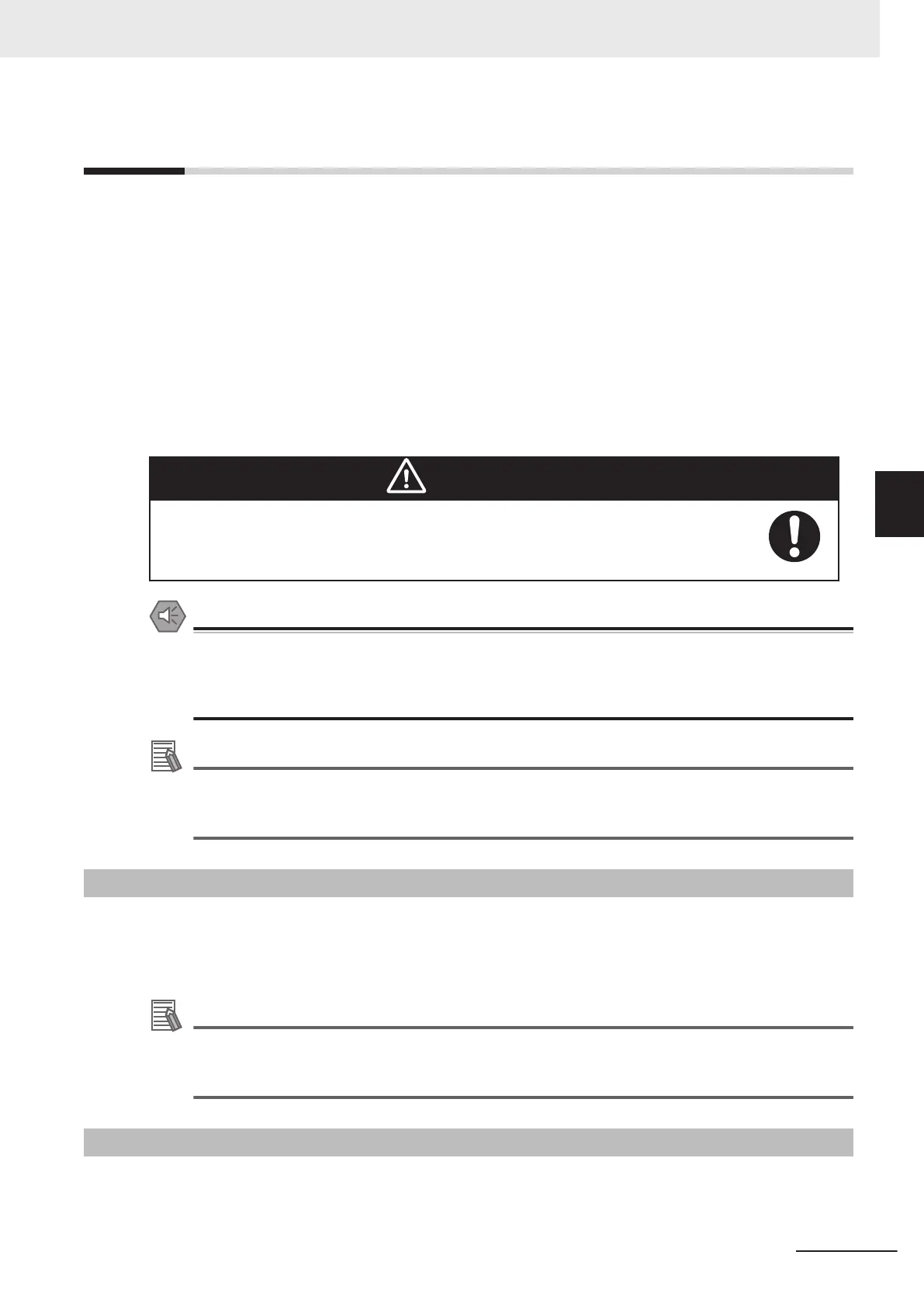4-7
Clearances
The AMR must operate in an environment that is generally flat, with no doors or other restricted areas
that are too narrow for the AMR to pass through. The AMR is designed to operate in environments
that contain doors, passageways, or other constrained areas that are wide enough for it to traverse.
You must ensure that adequate clearance is maintained on each side of the AMR, so that a person
cannot get trapped between the AMR and a wall or other fixed object. The AMR must not navigate
through doorways or pathways that are intended for personnel unless there is adequate room for both
to pass without risk, and without interfering with travel paths per applicable standards.
An AMR must often maneuver close to machinery, conveyors, or other fixed objects. In such cases,
operating standards usually allow an exception to side clearance requirements.
An exception to side clearance requirements may apply at pickup and dropoff locations, where the
AMR must get close to conveyors or other fixed objects.
WARNING
If the AMR is in an operational hazard or restricted zone, these areas must be proper-
ly marked or restricted according to applicable standards.
Precautions for Safe Use
• You must have floor markings to prevent people from entering the operating hazard zone for
pickup / dropoff locations with inadequate clearance.
• It is the end user's responsibility to provide the necessary training to personnel to properly
mark the floors around the payload transfer locations.
Additional Information
Refer to Fleet Operations Workspace Core User's Manual (Cat. No. I635) for information about
software parameters that you can use to control the AMRs front and side clearance zones.
These settings can help to prevent the AMR from closely approaching obstacles.
4-7-1
Rotational Clearances
The AMR travels in forward and backward directions and can rotate on its center of rotation (turns in
place). Obstacles can trigger a safety system event when the AMR rotates. When turning in place, ro-
tational clearances must be considered.
Additional Information
The AMR's Light Discs as well as its front and back light strips display a distinct turn signal pat-
tern when it rotates. Refer to 4-21 Light Discs and Optional Beacon States on page 4-41 and
4-22 Light Strips and Optional Beacon States on page 4-44 for more information.
4-7-2
Docking Clearances
Set a 1900 mm distance between the Docking Target goal (defined in the map) and the dock goal po-
sition of the AMR using MobilePlanner. This distance provides sufficient room for the AMR to align with
4 Operation
4-13
AMR (Autonomous Mobile Robot) MD-series Platform User's Manual (I681)
4-7 Clearances
4
4-7-1 Rotational Clearances

